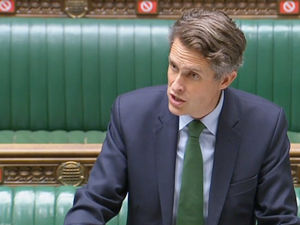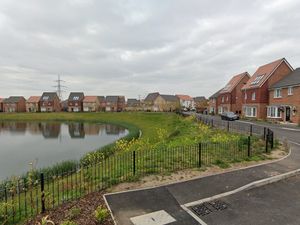Seats set to be lost under boundary shake-up in Black Country and Staffordshire
Two parliamentary seats are to be lost in the Black Country and Staffordshire under a proposed shake-up of constituency boundaries.

The final draft of the Boundary Commission for England's proposed new electoral map goes out for consultation today. People being urged to have their say on the proposals before December 5.
The commission has submitted revised proposals, following an earlier consultation in March this year.
If the proposals are implemented, one of either South Staffordshire MP Sir Gavin Williamson or his colleague Mike Wood in neighbouring Dudley South are likely to be looking for a new seat.
The new draft proposals will see the two seats effectively merge into one, with other parts of Dudley South being transferred into either the adjoining Dudley North – which would lose the North suffix – or Stourbridge constituencies.
Sir Gavin had written to the commissioners arguing that the South Staffordshire area had a distinct identity from that of Kingswinford.
Residents of Kingswinford also objected, saying the proposal would see them cut off from the rest of Dudley borough.
A report by the commission admitted: "The public consultation generated a largely negative response to the proposed Kingswinford and South Staffordshire constituency."
But it said alternative proposals would have meant carving up other areas of the Black Country, which would not have been desirable.
It is proposed that the existing Stone constituency be extended to include Great Wyrley and Penkridge.
Wolverhampton will retain three seats under the shake-up, at the expense of Walsall which will see its quota reduced to two.
Willenhall and Short Heath wards will be transferred into Wolverhampton North East, while Bentley and Darlaston North, Darlaston South and Willenhall South will move into Wolverhampton South East. A new Wolverhampton West constituency, made up of the city centre, Penn, Blakenhall and Tettenhall will also be created.
Aldridge-Brownhills constituency has been given a reprieve following representations from constituents, with the rest of Walsall borough now served by a new Walsall and Bloxwich constituency.
Sandwell sees a major shake-up, with the Warley seat disappearing, West Bromwich reduced to one constituency, but Smethwick returning to the electoral map for the first time since 1974.
A cross-borough seat will also be created for Tipton and Wednesbury, taking in the Dudley borough seat of Coseley East.
A campaign supported by Lichfield MP Michael Fabricant has seen the commission rethink plans to move the village of Streethay into the neighbouring Tamworth constituency. More than 500 people had signed a petition objecting to the change.
Lichfield will lose Whittington to neighbouring Tamworth, but will gain the village of Wall and the neighbouring hamlets.
Mr Fabricant said he was sad to lose Whittington, but accepted that the constituency needed to be reduced in size as more people had moved in.
“I am relieved and happy that the Parliamentary Boundary Commission has seen sense, after studying the evidence, and listening to the over 500 residents of Streethay who argued for Streethay to remain in the Lichfield constituency."
The Cannock Chase constituency is broadly unchanged.
The changes seek to ensure that all seats in the UK – aside from a handful of 'protected' ones –have no fewer than 69,724 constituents, and no more than 77,062.
Regardless of whether or not they are adopted, they will not come into force until after the next General Election.
Tim Bowden, secretary to the Boundary Commission for England, urged people to have their say on the proposals in the final consultation before they are presented to parliament next year.
He said the new electoral map was the result of months of analysis.
"We have revised nearly half of our initial proposals based on what people have told us. We now believe we are close to the best map of constituencies that can be achieved under the rules we are working to.
"However, we still want people to tell us what they think of this latest map before we submit our final recommendations."
Previous plans, first proposed by David Cameron's government, would have seen the total number of MPs reduced from 650 to 600, but these were abandoned before the last General Election.




